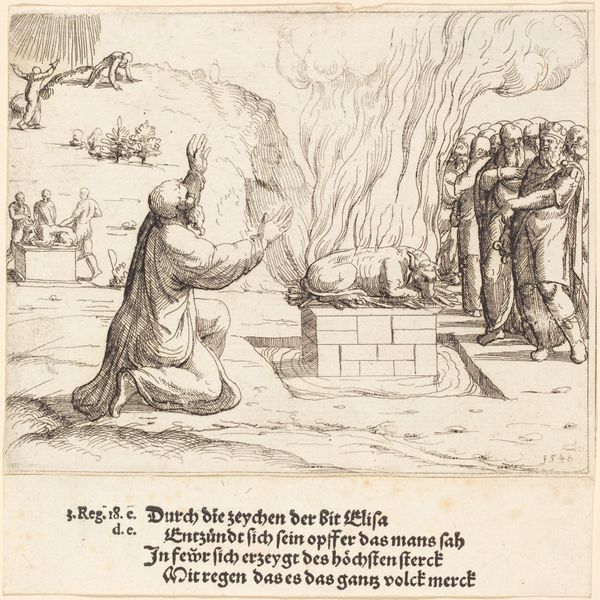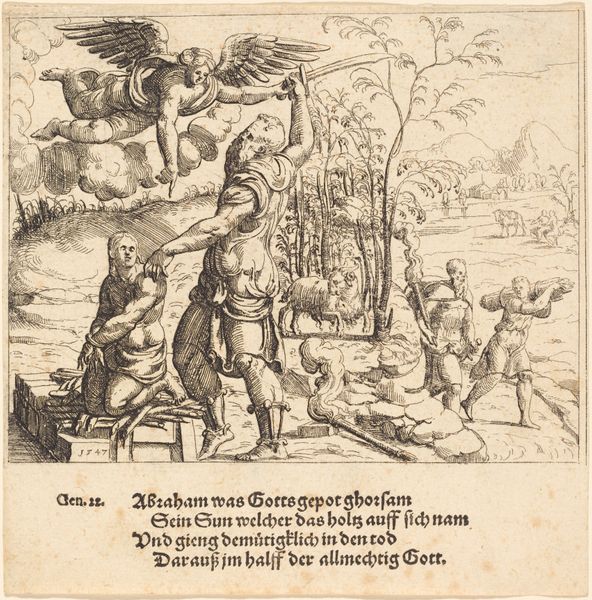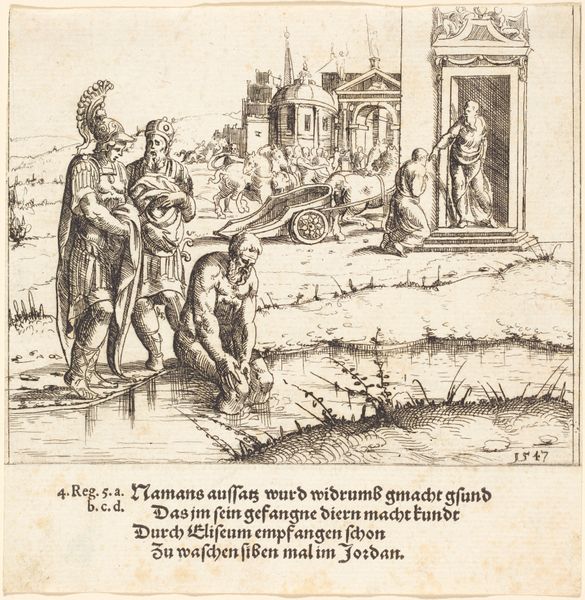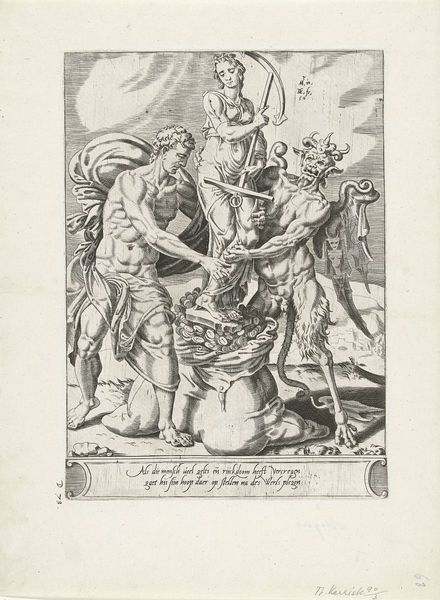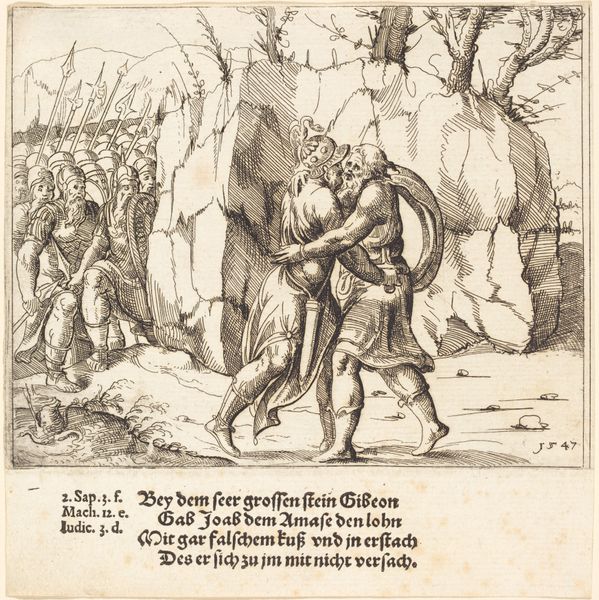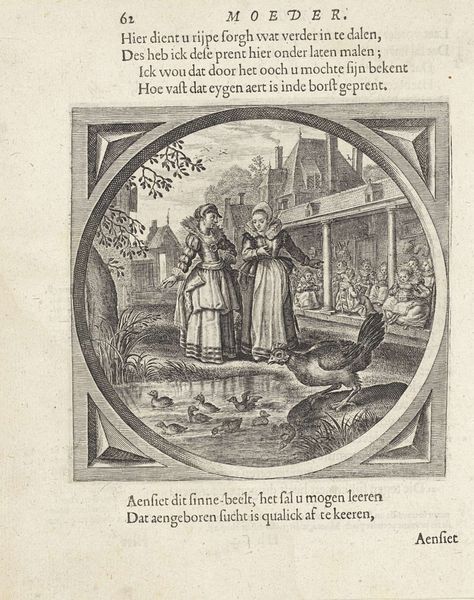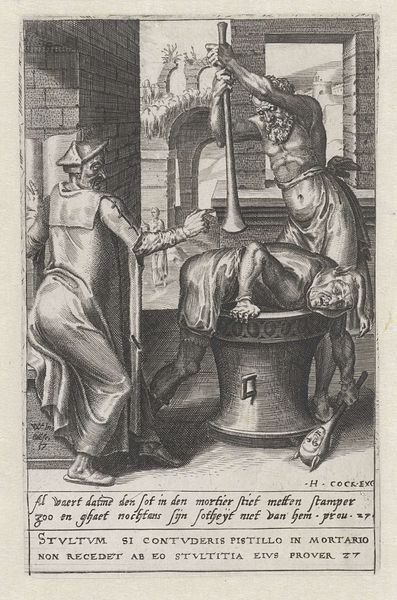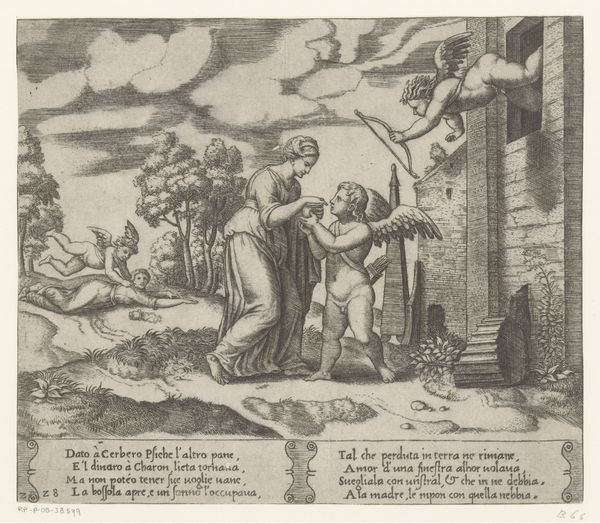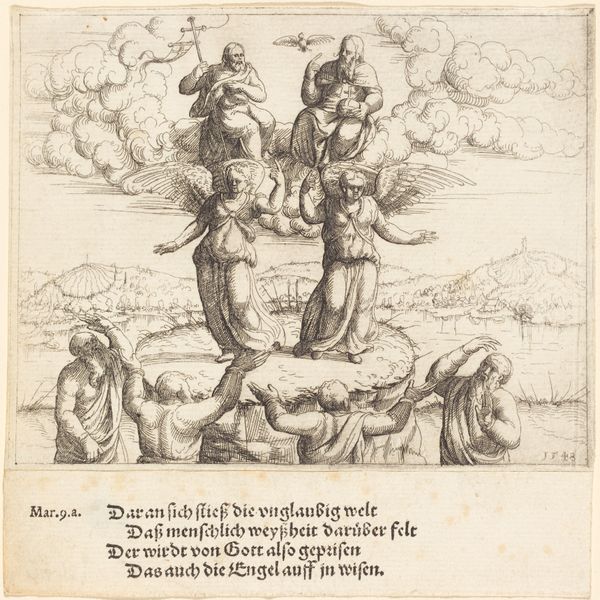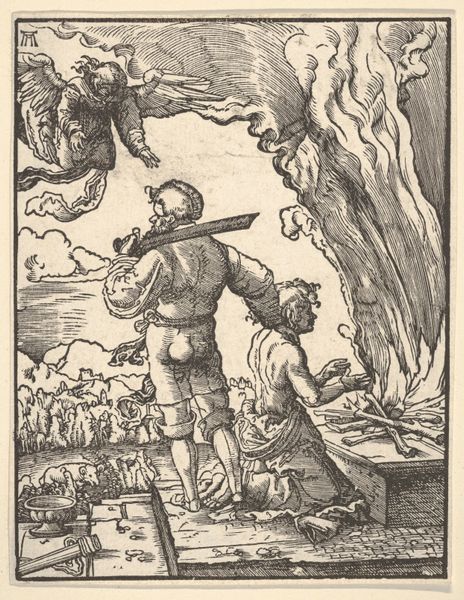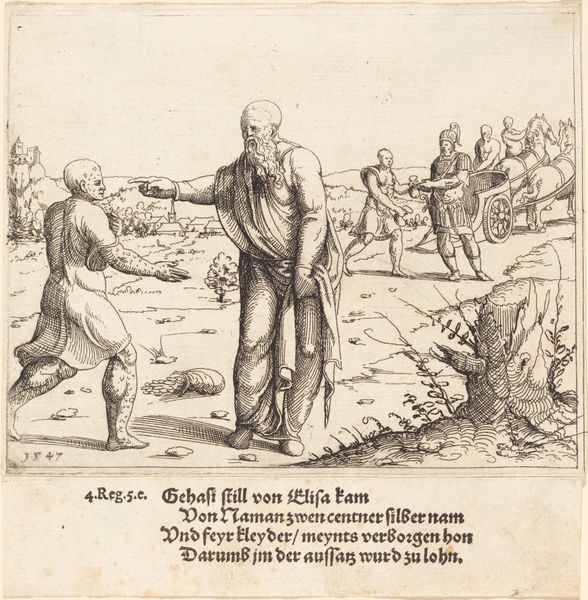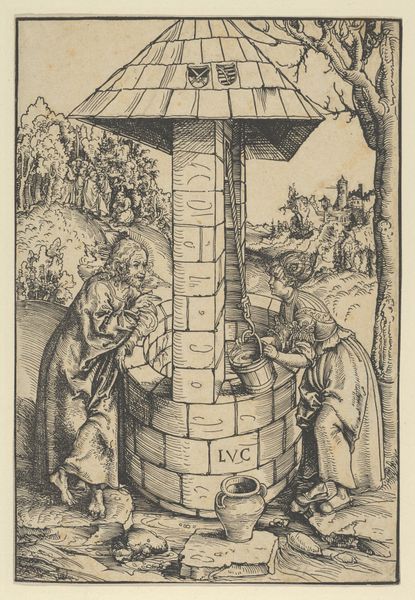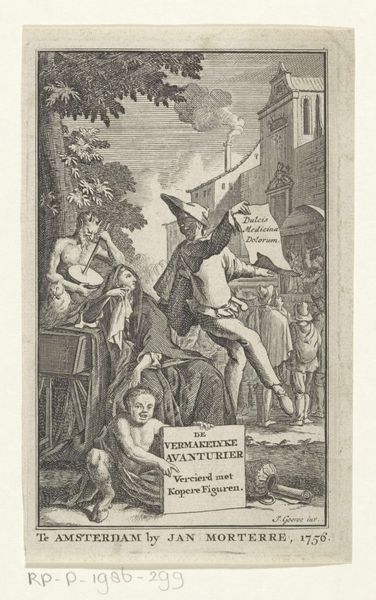
print, engraving
# print
#
figuration
#
11_renaissance
#
line
#
history-painting
#
northern-renaissance
#
engraving
Copyright: National Gallery of Art: CC0 1.0
Augustin Hirschvogel etched "The Sacrifice of Gideon" in 1549, an image brimming with symbolism. We see Gideon, preparing an offering, and an angel amidst a burst of flames from the altar, a divine sign of God's acceptance. The angel hovering within the fiery spectacle echoes similar motifs found across cultures. Consider the winged figures in ancient Mesopotamian art, or the burning bush in Moses' story; these images denote divine presence and revelation. The burning altar itself is a potent symbol, recurring in sacrificial rites throughout history. Fire, a transformative force, links the earthly with the divine. It stirs something primal in us, a collective memory of purification and renewal. The image evokes a powerful sense of awe and transformation. These are not mere illustrations; they are conduits to a deeper, shared understanding of human experience and the eternal quest for meaning, perpetually evolving through the ages.
Comments
No comments
Be the first to comment and join the conversation on the ultimate creative platform.
